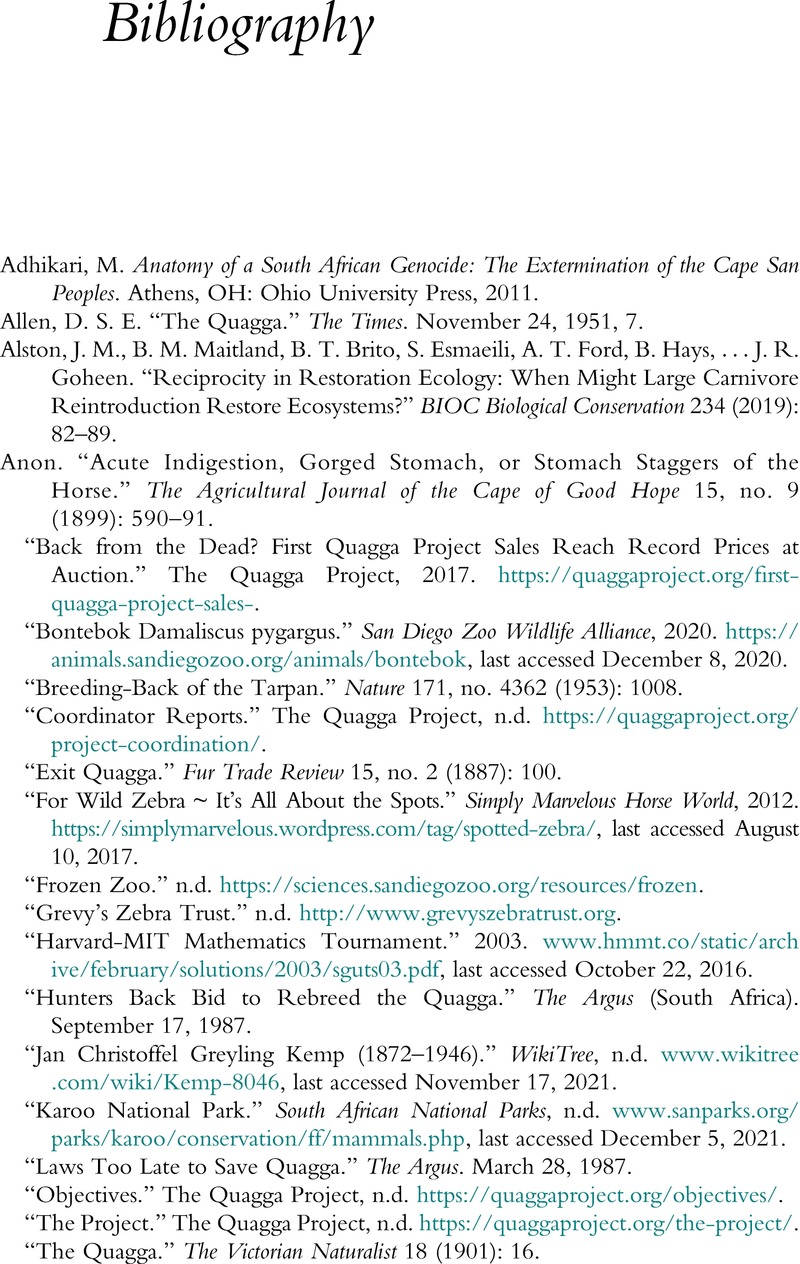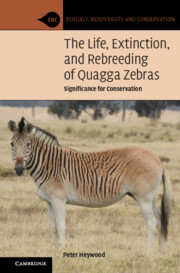Book contents
- The Life, Extinction, and Rebreeding of Quagga Zebras
- Ecology, Biodiversity and Conservation
- The Life, Extinction, and Rebreeding of Quagga Zebras
- Copyright page
- Dedication
- Contents
- Acknowledgments
- Introduction
- 1 Zebras
- 2 Quaggas
- 3 Coat Coloration
- 4 Quaggas, Zebras, and Humans in Southern Africa
- 5 Quaggas Abroad
- 6 Extinction
- 7 Afterlife
- 8 Rebreeding
- 9 Identity and Conservation
- Book part
- Notes
- Bibliography
- Index
- References
Bibliography
Published online by Cambridge University Press: 30 April 2022
- The Life, Extinction, and Rebreeding of Quagga Zebras
- Ecology, Biodiversity and Conservation
- The Life, Extinction, and Rebreeding of Quagga Zebras
- Copyright page
- Dedication
- Contents
- Acknowledgments
- Introduction
- 1 Zebras
- 2 Quaggas
- 3 Coat Coloration
- 4 Quaggas, Zebras, and Humans in Southern Africa
- 5 Quaggas Abroad
- 6 Extinction
- 7 Afterlife
- 8 Rebreeding
- 9 Identity and Conservation
- Book part
- Notes
- Bibliography
- Index
- References
Summary

- Type
- Chapter
- Information
- The Life, Extinction, and Rebreeding of Quagga ZebrasSignificance for Conservation, pp. 196 - 218Publisher: Cambridge University PressPrint publication year: 2022

